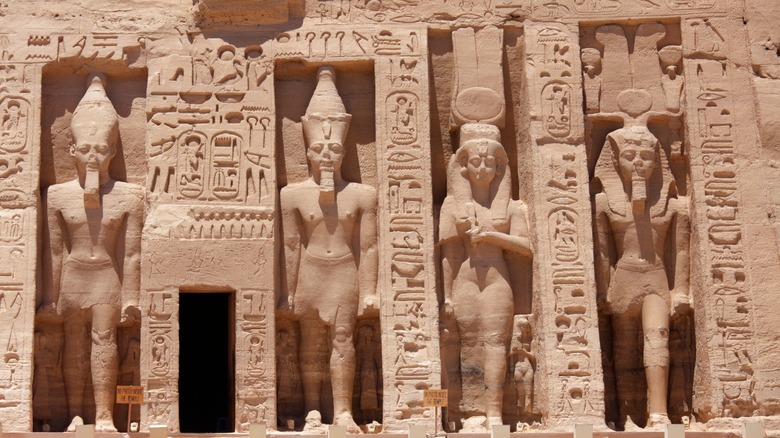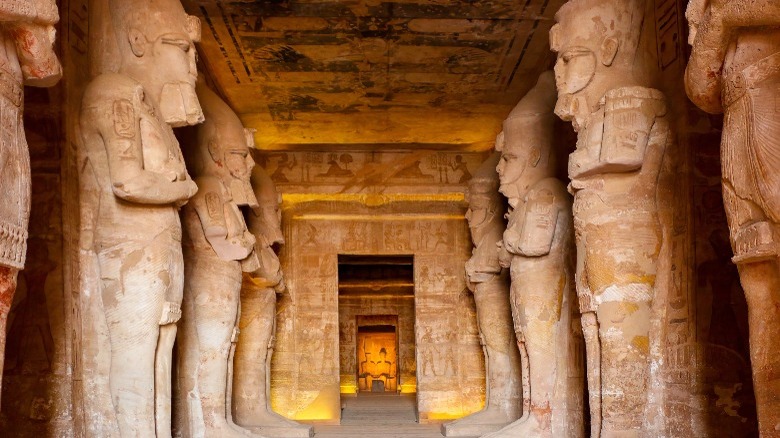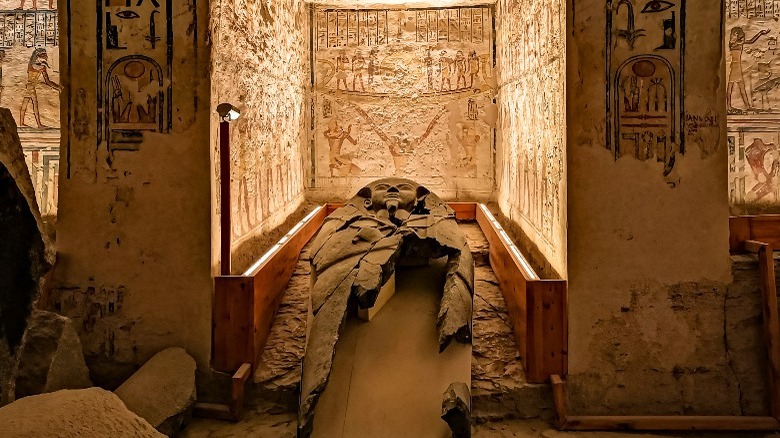Why Researchers Think The Mummified Knees Found In Nefertari's Tomb Are Probably Hers
Over the thousands of years of Egyptian history, there have been many powerful dynasties and rulers. One of the most well-known of these pharaohs was Ramses II, who had the second-longest reign in Egyptian history (per Britannica). While his reign on its own is filled with accomplishments — like his building programs — Ramses II was also known for his wife, Nefertari, who was reportedly an outstanding figure in her own right.
Though she never ruled as a sovereign, she is still one of Egypt's most famous queens alongside Cleopatra, Nefertiti, and Hatshepsut (via Egypt Today). Nefertari was the first of Ramses II's wives and was said to have been extremely beautiful, with her name even meaning "beautiful companion" (per Ancient Egypt). In addition to being gorgeous, she was reportedly highly educated and was active in politics alongside her husband. She was a beloved figure in life and was greatly honored after her death as well.
Nefertari's Tomb
Following her death around 1250 B.C., Nefertari was honored by her husband in spectacular fashion (per History). As he was known as the great builder of his time, Ramses II pulled out all of the stops when it came to his favorite wife. He built her an ornate tomb in the Valley of the Queens and also built an entire temple to honor her and the goddess Hathor.
As she died thousands of years ago, it makes sense that the place of her burial would be lost to time. However, her tomb was unearthed once again in 1904 by Italian archeologists, according to NPR. Nefertari's final resting place was nothing short of lavish, as it featured elaborate paintings that decorated the walls and ceiling (per Smithsonian). Unfortunately, as lovely as the tomb looked in some ways, it had also experienced some serious damage at the hands of grave robbers.
The Knees of A Queen
When the archeologists began exploring the tomb, two things were immediately evident. According to Smithsonian Magazine, the sarcophagus containing the queen's remains had been smashed, and there were only partial human remains left behind. The mummified legs forced the archeologists to question who they belonged to. Were these the legs of the legendary queen or of someone else? A team of international archeologists decided to try to find out.
According to Live Science, recent scientific analysis of the mummified leg fragments has produced some answers. The legs were determined to belong to a woman of middle age or older who was about 5 feet, 5 inches tall. It was also discovered that the legs exhibited signs of arthritis and possible arteriosclerosis, indicating the woman was probably between the ages of 40 and 60 when she died. DNA testing wasn't helpful, but there was evidence of embalming elements common in the 19th dynasty. All of these things lead researchers to believe that these leg bones are very likely those of Queen Nefertari.


